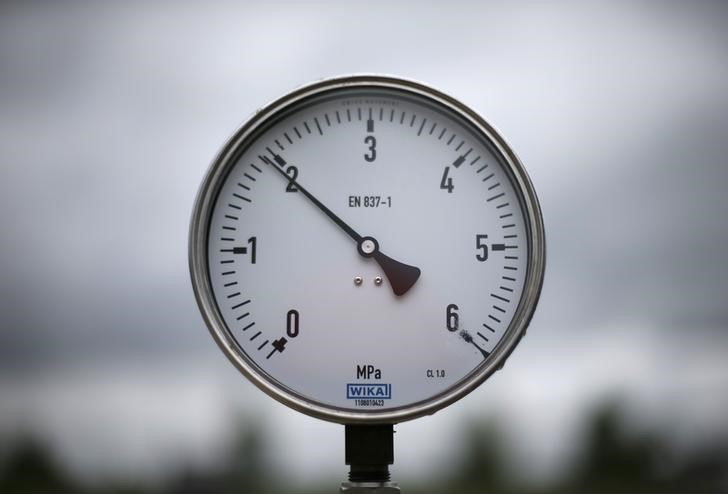(Repeats with no changes to text)
By Clyde Russell
LAUNCESTON, Australia, Oct 26 (Reuters) - China stands out as a bright spot for oversupplied liquefied natural gas (LNG) markets, but it's much more than just a beacon of demand hope, it's the microcosm of how the global market is likely to develop.
China's imports of the super-chilled fuel almost doubled to 2.53 million tonnes in September from the same month in 2015, according to customs data.
While a small part of the surge is likely because of an earlier outage of the Sichuan-East China gas pipeline, the overall story is that China is finally starting to fulfil its promise as the next great hope for LNG.
Imports over the first nine months of 2016 were 17.87 million tonnes, up 26.5 percent over the same period in 2015.
This positive picture stands in contrast to Japan, the world's biggest buyer of the fuel, where imports dropped 3.5 percent in the first eight months from year-ago levels.
Number two LNG importer South Korea has also seen declining purchases, buying 5.8 percent less in the first nine months.
Despite ongoing weakness in the top two buyers and the continuing addition of new supply, LNG prices in Asia have staged a modest recovery in recent weeks, with the spot price LNG-AS rising to $6.80 per million British thermal units (mmBtu) in the week to Oct. 21, up 70 percent from its low so far this year of $4, hit in mid-April.
Part of the price recovery is linked to stronger Chinese demand, but given the wave of new supply expected to hit the market in the next few years, it's extremely unlikely that LNG will get anywhere near the heady days of early 2014 when it traded above $20 per mmBtu.
Nonetheless, China's rising imports do show how the dynamics of the market are changing.
China's biggest LNG supplier is Australia, with imports jumping a massive 101.3 percent in the first nine months of the year to 8.13 million tonnes.
This puts Australia's share of China's imports at 45 percent, well ahead of the 17 percent enjoyed by Qatar, the next biggest supplier.
AUSTRALIA GRABBING QATAR'S SHARE
Australia's sharp increase in the market share in China has largely been at the expense of Qatar, with China's imports from the Gulf producer down 3.5 percent over January to September.
Among other major suppliers to China, shipments from Indonesia and Malaysia are down 3.4 percent and 18.7 percent, respectively, although Papua New Guinea is up by 53.4 percent, albeit off a very low base.
The trend of Australia grabbing an increasing share of Asia's LNG markets is just getting started, especially as the last of the country's eight new projects start to come online in the next 18 months.
Australia will overtake Qatar as the world's largest LNG producer, and it's likely that it will use it's new found supply dominance to pressure the Gulf producer's market share.
While Qatar is a low-cost LNG producer, it's further from North Asian markets than Australia and it's not clear that it is enjoying a competitive advantage from its lower cost base.
China customs data show the landed cost of cargoes from Australia in September was $6 per mmBtu, while those from Qatar were $7.69.
Australia supplies cargoes to China under a mix of agreements, ranging from a cheap legacy long-term contract, to newer, oil-linked deals and spot deals.
However, if the Australian projects can keep their prices below those from Qatar, it's hard to see why the Chinese wouldn't buy more from Down Under.
It's therefore likely the trend of Australia pushing Qatar away from Asian markets and toward Europe is likely to continue.
This is positive for European LNG buyers, as it will deepen their suppliers and result in increased competition between Middle Eastern, African and North American producers, not to mention pipeline supplies from Russia.
Another interesting takeaway from the Chinese customs data is that the United States has yet to make a physical impact on Asian LNG markets.
Just 59,842 tonnes of LNG was imported by China from the United States in September, and that was the first for the year.
Vessel-tracking data compiled by Thomson Reuters Supply Chain and Commodity Forecasts show a single cargo from the Sabine Pass facility in the Gulf of Mexico was discharged at Guangdong in China's south in late August.
The data shows no other cargoes this year from the United States to North East Asia, although it does show two cargoes from Sabine Pass to India in September and another in late July.
The bulk of U.S. cargoes from Sabine Pass, the first LNG export facility in the Gulf of Mexico, have headed to South America and Europe.
What this may show is that U.S. LNG may struggle to compete in Asia, but can work in the Atlantic Basin.
But the fact that U.S. LNG can, and does in a small way, move to Asia shows that it may act as the marginal supplier, meaning that price of natural gas in the United States is likely to become a more important driver of LNG prices, and may supplant the link to crude oil over time.
<^^^^^^^^^^^^^^^^^^^^^^^^^^^^^^^^^^^^^^^^^^^^^^^^^^^^^^^^^^^ Graphic: China's LNG imports from Australia, Qatar
http://tmsnrt.rs/2eQkfNQ
^^^^^^^^^^^^^^^^^^^^^^^^^^^^^^^^^^^^^^^^^^^^^^^^^^^^^^^^^^^> (Editing by Himani Sarkar)
